thaiguy stimmt es das Otres Beach noch alles ok ist und nicht verbaut dort kann man noch gut hin?
Willkommen in unserer Community
Möchtest du dem Forum beitreten? Das gesamte Angebot ist kostenlos.
Registrieren
Du verwendest einen veralteten Browser. Es ist möglich, dass diese oder andere Websites nicht korrekt angezeigt werden.
Du solltest ein Upgrade durchführen oder einen alternativen Browser verwenden.
Du solltest ein Upgrade durchführen oder einen alternativen Browser verwenden.
Sihanoukville
- Ersteller thaifriend0815
- Erstellt am
thaiguy stimmt es das Otres Beach noch alles ok ist und nicht verbaut dort kann man noch gut hin?
Ich war im Februar am Otres 2 - auch in dieser Gegend wurde reichlich gebaut, besonders der gigantische Casino-Resort Neubau an der Ecke Otres Village / Otres 1 stach negativ heraus.
Könnte mir vorstellen, dass dort mittlerweile noch einiges mehr an Baustellen sein dürfte.
Damals war Trockenzeit, die Straßenverhältnisse schon sehr grenzwertig - riesen Schlaglöcher, etc.
Möchte nicht wissen, wie das jetzt in der Regenzeit dort abgeht...
Ein paar Impressionen von meiner Reise, auch von den Baustellen, kann man bei Interesse in meinem unten verlinkten Bericht nachlesen.
Gerade kam auf K440 eine neue interessante Nachricht: Der Besitzter, ein ehemaliger Gouverneur, hat einigen Geschaeften an der Strasse zum Stand gekuendigt, trotz bestehender Vertraege, und weigert sich auch die sicherlich sehr hohen Depositen herauszugeben. Wichtig fuer Touris/Expats ist, dass ANA Travel betroffen ist. Damit ist ein sehr zuverlaessiger Visa-Agent und auch relativ ordentliches Reisebuero fuer LLC-, nicht IATA-Tickets, weg vom Fenster.
Die Chinesen haben damit weit mehr als die Haelfte der Laeden runter zum Strand platt gemacht. Mal sehen, wie lange sich Olive/Olive halten kann. Deren Lage ist ja geradezu eine Provokation fuer die Chinesen.
Die Nachricht ist ein weiterer Grund SHV zu meiden.
Die Chinesen haben damit weit mehr als die Haelfte der Laeden runter zum Strand platt gemacht. Mal sehen, wie lange sich Olive/Olive halten kann. Deren Lage ist ja geradezu eine Provokation fuer die Chinesen.
Die Nachricht ist ein weiterer Grund SHV zu meiden.
Ein Bild sagt oft mehr als 1000 Worte.
War allerdings keine Betonwand.
Chinese Man Smashes His Lexus RX 300 into a Wall in Sihanoukville - Cambodia Expats Online: Forum | News | Information | Blog

Sihanoukville: At 6 am on July 26, 2018, while driving his Lexus RX300, an unidentified Chinese man left the road and smashed the car into a very large and obvious concrete wall in village 4, Sihanoukville. No reason was given for his erratic driving.
No other vehicles were involved and there was nobody injured. There is no mention of police or breathalyzers. After the incident, the driver arranged the removal of the damaged car from the scene.



Liegt vielleicht an den Fuehrerscheinen:
14 Cars Confiscated by Police, Driven by Chinese Without a License, Sihanoukville - Page 5 - Cambodia Expats Online: Forum | News | Information | Blog

Police Confiscate Weapons During Driving Crackdown, Sihanoukville - Cambodia Expats Online: Forum | News | Information | Blog

War allerdings keine Betonwand.
Chinese Man Smashes His Lexus RX 300 into a Wall in Sihanoukville - Cambodia Expats Online: Forum | News | Information | Blog

Sihanoukville: At 6 am on July 26, 2018, while driving his Lexus RX300, an unidentified Chinese man left the road and smashed the car into a very large and obvious concrete wall in village 4, Sihanoukville. No reason was given for his erratic driving.
No other vehicles were involved and there was nobody injured. There is no mention of police or breathalyzers. After the incident, the driver arranged the removal of the damaged car from the scene.



Liegt vielleicht an den Fuehrerscheinen:
14 Cars Confiscated by Police, Driven by Chinese Without a License, Sihanoukville - Page 5 - Cambodia Expats Online: Forum | News | Information | Blog

Police Confiscate Weapons During Driving Crackdown, Sihanoukville - Cambodia Expats Online: Forum | News | Information | Blog

Die chinesische Mafia etabliert sich nun auch offiziell in SHV. Die verwundeten Jungs wurden nur gewarnt. Die Ameisen in den Waeldern um SHV werden sicherlich bald recht fett.
http://www.hkfinancialnews.com/form...d-overseas-chinese-links-in-cambodia-venture/
Und hier unsere taegliche Dosis:
This idyllic beach was filled with Aussie backpackers. Now it’s unrecognisable
Das Ding ist schrecklich lang. Ich habe daher bloss einige tolle Fotos geklaut:
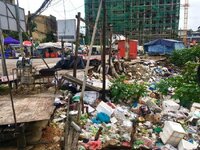
The rapid rate of building has resulted in a city full of rubbish. Picture: Ian Lloyd Neubaue
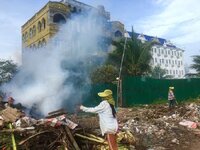
Construction waste being burned right in front of Ochheuteal Beach.
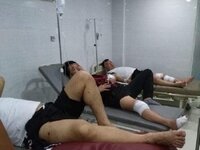
Three of the Chinese tourists who were shot while dining in a Chinese restaurant in Sihanoukville.Source:Supplied

Serendipity beach used to be full of backpacker bars. Now it’s a rubbish dump for construction waste.Source:Supplied
http://www.hkfinancialnews.com/form...d-overseas-chinese-links-in-cambodia-venture/
Und hier unsere taegliche Dosis:
This idyllic beach was filled with Aussie backpackers. Now it’s unrecognisable
Das Ding ist schrecklich lang. Ich habe daher bloss einige tolle Fotos geklaut:

The rapid rate of building has resulted in a city full of rubbish. Picture: Ian Lloyd Neubaue

Construction waste being burned right in front of Ochheuteal Beach.

Three of the Chinese tourists who were shot while dining in a Chinese restaurant in Sihanoukville.Source:Supplied

Serendipity beach used to be full of backpacker bars. Now it’s a rubbish dump for construction waste.Source:Supplied
Hier etwas aus dem Guardian. Der Beitrag stellt SHV in einen breiteren Zusammenhang, es geht eben nicht allein um Casinos und Pauschaltouristen.
'No Cambodia left': how Chinese money is changing Sihanoukville
Cities of the New Silk Road
Cities
The once-sleepy beach town of Sihanoukville has been transformed by Chinese investment – and the sheer speed of development has divided locals
Cities is supported by
 About this content
About this content

Hannah Ellis-Petersen in Sihanoukville
Tue 31 Jul 2018 06.30 BST Last modified on Tue 31 Jul 2018 11.32 BST
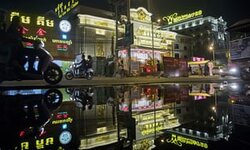
New casinos in Sihanoukville, a byproduct of Chinese investment. Photograph: Bloomberg/Getty Images
Inside a lavishly decorated casino where chandeliers hang from the ceiling, cigarette smoke lingers in the air and platters of mango are served to gamblers, a game of baccarat is getting heated. Cards are slammed down, $100 bills are brandished and the gathered crowd of Chinese tourists shout excitedly.
This is not Las Vegas, nor is it Macau. It is Sihanoukville, a once-sleepy city in Cambodia that has become a ballooning enclave for Chinese-run casinos – despite gambling being banned. These towering skyscrapers and vast domed structures covered in flashing neon signs have transformed Sihanoukville beyond recognition in less than two years. It will have more than 70 of them by the end of 2018.
Q&A
Cities of the New Silk Road: what is China's Belt and Road project?
As home to Cambodia’s only deep-water port – part of a vital trade route for President Xi Jinping’s Belt and Road development initiative – the city has become a focal point for Chinese investment. Vast Chinese-run construction projects are visible across almost every area of the city and its high streets are now lined with majority-Chinese businesses and restaurants. Prime minister Hun Sen’s willing embrace of Chinese investment, unlike neighbouring countries Thailand, Myanmar and Vietnam, has ensured Cambodia is at the core of belt and road plans in southeast Asia. The southern coast of Cambodia is now home to $4.2bn worth of power plants and offshore oil operations all owned by Chinese companies. Beyond Sihanoukville, belt and road money is financing a new highway to Phnom Penh and a bigger airport in the capital.
The Cityscape: get the best of Guardian Cities delivered to you every week, with just-released data, features and on-the-ground reports from all over the world
The speed of development has left many locals unnerved. Some estimate that the Chinese make up almost 20% of the town’s population. Of the total number of foreign arrivals in 2017, nearly 120,000 were Chinese – an increase of 126% year-on-year. This fear has fuelled rising hostility among locals towards the new influx of Chinese residents. The two communities live side-by-side in Sihanoukville but rarely interact.
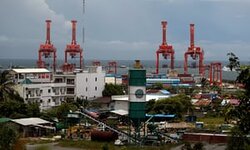
The Sihanoukville port has become a vital trade route for the Belt and Road development. Photograph: Pring Samrang/Reuters
Sitting outside her family restaurant and guesthouse in Otres beach, 23-year-old Deu Dy gestures with concern to the huge Chinese resort complex being built next door. It has gone up in less than a year, with construction 24 hours a day.
“Everything has changed in Sihanoukville in just two years,” says Dy, who is learning Chinese to try to integrate better with the city’s new community. “Before it was really quiet here, but not any more with all the Chinese construction. I am worried that it’s very destructive to the environment, all this building … and what will happen when all the construction is finished and thousands more people come? There will be no Cambodia left in Sihanoukville.”
Before it was really quiet here, but not any more with all the Chinese construction
Deu Dy
Like many local business owners in the city, she is regularly approached by Chinese investors wanting to buy her inn and offering her very good money. It is tempting, now she says that her family’s profits have collapsed: the 24-hour construction next door has driven away their European customers, while Chinese tourists prefer to stay in Chinese-run hotels and resorts.
While not directly funded by Belt and Road money, the casinos and condo complexes are a byproduct of a city that has given itself over entirely to Chinese investment. Of the $1.3bn (£1bn) invested in Sihanoukville over the past year, $1.1bn has come from China. Chinese casino owners have also taken advantage of the nonexistent gambling regulation and lax money-laundering laws to set up an empire that is accessible only to foreigners – because gambling is still illegal for Cambodian locals.

An illustration of plans for Kai Bo Plaza in Sihanoukville.
Many of the new Chinese businesspeople arriving in Sihanoukville are here to take advantage of a new China-Cambodia tax-free economic zone. The majority of the 100-plus factories in the zone are run by Chinese companies, and a further 200 mainly Chinese companies – producing consumer goods and garments – will be part of its ongoing expansion. A four-lane highway is being built by a Chinese construction company to connect Sihanoukville to Cambodia’s capital, Phnom Penh.

Follow the New Silk Road
Read more
For the locals, this ongoing transformation is divisive. Some are benefiting from an influx of money the city has never seen before, but many are being driven out by the skyrocketing cost of living.
Kong Samol, 32, a tuk-tuk driver, is one of those losing out. “Because of all the Chinese businessmen here, my expenses have gone up but my earnings have gone down,” he says. “My rent has increased from $50 to $150 and it’s unaffordable for me. The owner wants to kick me out of my room so he can rent it to the Chinese who will pay so much more than I can afford. I know so many people who came here for work but have moved back to their villages because rent is impossible now.”
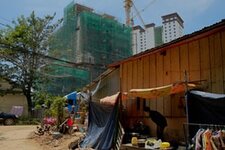
Sihanoukville has changed dramatically in two years.

Sign up for the Cityscape: the best of Guardian Cities every week
Read more
Hemming clothes outside his sewing shop in the shadow of a new Chinese casino, Seng Lim Huon says Chinese investment is widening the divide between rich and poor. “The people who own the land here and have houses to rent, they can live bigger and bigger because they can earn so much more than before,” he says, adding that rooms he would once rent out for $500 per month to local residents now go for $4,500 to Chinese visitors. “But for people who don’t own land, it is a terrible situation.”
Svay Sovana, 42, was among those overjoyed by Chinese investment in Sihanoukville. She used to earn $1,000 per month renting out a three-storey house to Europeans; she will earn $15,000 when her new Chinese tenants move in this month.
The Chinese have much more money than Cambodians, and that means they have the power here now
Srey Mach
The transformation has also brought employment to the city. While a large number of Chinese workers have been brought in to staff casinos, there are also more jobs being offered to Cambodians, who earn between $120 and $200 a month (considered decent wages). Cambodian workers on Chinese construction sites earn three times what they used to on local projects.
More grandiose and divisive projects are cropping up by the day. This week saw the announcement of a new $1bn joint Chinese-Malaysian-run Sihanoukville resort Wisney World, which will feature water parks, hotels, casinos, malls, gardens and churches across 65 hectares of land. In a sign of the disconnect between Chinese investors and those in local government, Sihanoukville’s provincial governor, Yun Min, said he had never even heard of the project.
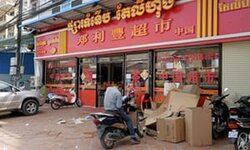
Chinese investment has brought wealth to the city – but it hasn’t reached the whole community.
Sihanoukville is no stranger to foreign investment. Before the Chinese it was the Russians who pumped money into local resorts and restaurants. The relationship is memorialised by a large, fading billboard outside an abandoned resort building site, which pictures long-serving Cambodian prime minister Hun Sen shaking Vladimir Putin’s hand.
However, the key complaint for many in Sihanoukville is that even though Chinese investment brings wealth, it is mainly kept within their own community. Chinese residents and visitors buy from Chinese businesses and visit Chinese restaurants and hotels, ensuring the trickle-down effect is minimal.
I think the Chinese government and the Chinese embassy accepts there is rising anti-China rhetoric in Cambodia
Vannarith Chheang
“Chinese products are very expensive, it is not good for us, and the Chinese buy only Chinese goods so we are very separate,” says Srey Mach, 43, shredding morning glory outside her shop while the sound of construction thunders all around. “Even the vegetables and fruits they export from China. The Chinese have money, much more money than the Cambodians, and that means they have the power here now.”
As one of south-east Asia’s poorest countries, suffering from basic power and sanitation issues, Cambodia has welcomed the hefty cheques, soft loans and infrastructure plans from China with open arms. Between 2013 and 2017, China invested $5.3bn in the country – that’s more money than the Cambodian government did. Cambodia’s reliance on China has become even more pronounced in recent months after the US and EU pulled funding in the light of recent authoritarian political measures.
The speed at which money is pouring in has also left local authorities in Sihanoukville with little time and resources to create regulation to manage either the dark underbelly of the Chinese casinos – sophisticated financial crime and money laundering – or the growing local discontentment.

Deu Dy outside her family’s guest house in Otres beach.
Locals seethe when they discuss the problem of organised crime: there have been incidents of kidnappings as well as an increase in drink-driving accidents and prostitution. Earlier this year, the regional governor complained that the crime rate in the province was increasing, in part due to an influx of “Chinese mafia [who] disguise themselves to commit various crimes and kidnap Chinese investors … causing insecurity in the province”.
Yet with so much at stake in Cambodia, the Chinese are equally keen for the tide not to turn against Belt and Road. Sihanoukville is at the heart of this.
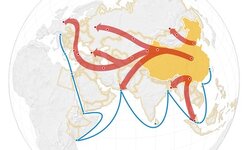
What is China's Belt and Road Initiative?
Read more
“The image of China in Cambodia has been affected by what’s happened in Sihanoukville,” says Vannarith Chheang, co-founder of the Cambodian Institute for Strategic Studies. “I think the Chinese government and the Chinese embassy accepts there is rising anti-China rhetoric in Cambodia.”
Highlighting ongoing negotiations between the two governments in an effort to tackle crime and local ill feeling, he adds: “It is important for China to win the hearts of the Cambodian people. If China fails in Cambodia it will fail in the region.”
'No Cambodia left': how Chinese money is changing Sihanoukville
Cities of the New Silk Road
Cities
The once-sleepy beach town of Sihanoukville has been transformed by Chinese investment – and the sheer speed of development has divided locals
Cities is supported by
 About this content
About this content
Hannah Ellis-Petersen in Sihanoukville
Tue 31 Jul 2018 06.30 BST Last modified on Tue 31 Jul 2018 11.32 BST

New casinos in Sihanoukville, a byproduct of Chinese investment. Photograph: Bloomberg/Getty Images
Inside a lavishly decorated casino where chandeliers hang from the ceiling, cigarette smoke lingers in the air and platters of mango are served to gamblers, a game of baccarat is getting heated. Cards are slammed down, $100 bills are brandished and the gathered crowd of Chinese tourists shout excitedly.
This is not Las Vegas, nor is it Macau. It is Sihanoukville, a once-sleepy city in Cambodia that has become a ballooning enclave for Chinese-run casinos – despite gambling being banned. These towering skyscrapers and vast domed structures covered in flashing neon signs have transformed Sihanoukville beyond recognition in less than two years. It will have more than 70 of them by the end of 2018.
Q&A
Cities of the New Silk Road: what is China's Belt and Road project?
As home to Cambodia’s only deep-water port – part of a vital trade route for President Xi Jinping’s Belt and Road development initiative – the city has become a focal point for Chinese investment. Vast Chinese-run construction projects are visible across almost every area of the city and its high streets are now lined with majority-Chinese businesses and restaurants. Prime minister Hun Sen’s willing embrace of Chinese investment, unlike neighbouring countries Thailand, Myanmar and Vietnam, has ensured Cambodia is at the core of belt and road plans in southeast Asia. The southern coast of Cambodia is now home to $4.2bn worth of power plants and offshore oil operations all owned by Chinese companies. Beyond Sihanoukville, belt and road money is financing a new highway to Phnom Penh and a bigger airport in the capital.
The Cityscape: get the best of Guardian Cities delivered to you every week, with just-released data, features and on-the-ground reports from all over the world
The speed of development has left many locals unnerved. Some estimate that the Chinese make up almost 20% of the town’s population. Of the total number of foreign arrivals in 2017, nearly 120,000 were Chinese – an increase of 126% year-on-year. This fear has fuelled rising hostility among locals towards the new influx of Chinese residents. The two communities live side-by-side in Sihanoukville but rarely interact.

The Sihanoukville port has become a vital trade route for the Belt and Road development. Photograph: Pring Samrang/Reuters
Sitting outside her family restaurant and guesthouse in Otres beach, 23-year-old Deu Dy gestures with concern to the huge Chinese resort complex being built next door. It has gone up in less than a year, with construction 24 hours a day.
“Everything has changed in Sihanoukville in just two years,” says Dy, who is learning Chinese to try to integrate better with the city’s new community. “Before it was really quiet here, but not any more with all the Chinese construction. I am worried that it’s very destructive to the environment, all this building … and what will happen when all the construction is finished and thousands more people come? There will be no Cambodia left in Sihanoukville.”
Before it was really quiet here, but not any more with all the Chinese construction
Deu Dy
Like many local business owners in the city, she is regularly approached by Chinese investors wanting to buy her inn and offering her very good money. It is tempting, now she says that her family’s profits have collapsed: the 24-hour construction next door has driven away their European customers, while Chinese tourists prefer to stay in Chinese-run hotels and resorts.
While not directly funded by Belt and Road money, the casinos and condo complexes are a byproduct of a city that has given itself over entirely to Chinese investment. Of the $1.3bn (£1bn) invested in Sihanoukville over the past year, $1.1bn has come from China. Chinese casino owners have also taken advantage of the nonexistent gambling regulation and lax money-laundering laws to set up an empire that is accessible only to foreigners – because gambling is still illegal for Cambodian locals.

An illustration of plans for Kai Bo Plaza in Sihanoukville.
Many of the new Chinese businesspeople arriving in Sihanoukville are here to take advantage of a new China-Cambodia tax-free economic zone. The majority of the 100-plus factories in the zone are run by Chinese companies, and a further 200 mainly Chinese companies – producing consumer goods and garments – will be part of its ongoing expansion. A four-lane highway is being built by a Chinese construction company to connect Sihanoukville to Cambodia’s capital, Phnom Penh.

Follow the New Silk Road
Read more
For the locals, this ongoing transformation is divisive. Some are benefiting from an influx of money the city has never seen before, but many are being driven out by the skyrocketing cost of living.
Kong Samol, 32, a tuk-tuk driver, is one of those losing out. “Because of all the Chinese businessmen here, my expenses have gone up but my earnings have gone down,” he says. “My rent has increased from $50 to $150 and it’s unaffordable for me. The owner wants to kick me out of my room so he can rent it to the Chinese who will pay so much more than I can afford. I know so many people who came here for work but have moved back to their villages because rent is impossible now.”

Sihanoukville has changed dramatically in two years.

Sign up for the Cityscape: the best of Guardian Cities every week
Read more
Hemming clothes outside his sewing shop in the shadow of a new Chinese casino, Seng Lim Huon says Chinese investment is widening the divide between rich and poor. “The people who own the land here and have houses to rent, they can live bigger and bigger because they can earn so much more than before,” he says, adding that rooms he would once rent out for $500 per month to local residents now go for $4,500 to Chinese visitors. “But for people who don’t own land, it is a terrible situation.”
Svay Sovana, 42, was among those overjoyed by Chinese investment in Sihanoukville. She used to earn $1,000 per month renting out a three-storey house to Europeans; she will earn $15,000 when her new Chinese tenants move in this month.
The Chinese have much more money than Cambodians, and that means they have the power here now
Srey Mach
The transformation has also brought employment to the city. While a large number of Chinese workers have been brought in to staff casinos, there are also more jobs being offered to Cambodians, who earn between $120 and $200 a month (considered decent wages). Cambodian workers on Chinese construction sites earn three times what they used to on local projects.
More grandiose and divisive projects are cropping up by the day. This week saw the announcement of a new $1bn joint Chinese-Malaysian-run Sihanoukville resort Wisney World, which will feature water parks, hotels, casinos, malls, gardens and churches across 65 hectares of land. In a sign of the disconnect between Chinese investors and those in local government, Sihanoukville’s provincial governor, Yun Min, said he had never even heard of the project.

Chinese investment has brought wealth to the city – but it hasn’t reached the whole community.
Sihanoukville is no stranger to foreign investment. Before the Chinese it was the Russians who pumped money into local resorts and restaurants. The relationship is memorialised by a large, fading billboard outside an abandoned resort building site, which pictures long-serving Cambodian prime minister Hun Sen shaking Vladimir Putin’s hand.
However, the key complaint for many in Sihanoukville is that even though Chinese investment brings wealth, it is mainly kept within their own community. Chinese residents and visitors buy from Chinese businesses and visit Chinese restaurants and hotels, ensuring the trickle-down effect is minimal.
I think the Chinese government and the Chinese embassy accepts there is rising anti-China rhetoric in Cambodia
Vannarith Chheang
“Chinese products are very expensive, it is not good for us, and the Chinese buy only Chinese goods so we are very separate,” says Srey Mach, 43, shredding morning glory outside her shop while the sound of construction thunders all around. “Even the vegetables and fruits they export from China. The Chinese have money, much more money than the Cambodians, and that means they have the power here now.”
As one of south-east Asia’s poorest countries, suffering from basic power and sanitation issues, Cambodia has welcomed the hefty cheques, soft loans and infrastructure plans from China with open arms. Between 2013 and 2017, China invested $5.3bn in the country – that’s more money than the Cambodian government did. Cambodia’s reliance on China has become even more pronounced in recent months after the US and EU pulled funding in the light of recent authoritarian political measures.
The speed at which money is pouring in has also left local authorities in Sihanoukville with little time and resources to create regulation to manage either the dark underbelly of the Chinese casinos – sophisticated financial crime and money laundering – or the growing local discontentment.

Deu Dy outside her family’s guest house in Otres beach.
Locals seethe when they discuss the problem of organised crime: there have been incidents of kidnappings as well as an increase in drink-driving accidents and prostitution. Earlier this year, the regional governor complained that the crime rate in the province was increasing, in part due to an influx of “Chinese mafia [who] disguise themselves to commit various crimes and kidnap Chinese investors … causing insecurity in the province”.
Yet with so much at stake in Cambodia, the Chinese are equally keen for the tide not to turn against Belt and Road. Sihanoukville is at the heart of this.

What is China's Belt and Road Initiative?
Read more
“The image of China in Cambodia has been affected by what’s happened in Sihanoukville,” says Vannarith Chheang, co-founder of the Cambodian Institute for Strategic Studies. “I think the Chinese government and the Chinese embassy accepts there is rising anti-China rhetoric in Cambodia.”
Highlighting ongoing negotiations between the two governments in an effort to tackle crime and local ill feeling, he adds: “It is important for China to win the hearts of the Cambodian people. If China fails in Cambodia it will fail in the region.”
Unterhaltung pur! Die Casinos stecken wohl mit den netten Jungs unter einer Decke.


Sihanoukville, Cambodia News: On August 21, 2018, at 8 pm, the police received a report that there were kidnapping victims being held in room no. 8301 at Oriental Pearl Casino in Sangkat 4, Sihanoukville.
After receiving the information, the police went to the casino to check the room no. 8301, where they released 3 Chinese victims, who were identified as LI SHI GUO, 45 years old, YU GUO, 33 years old, and GUO HOU XIANG, 34 years old. The victims had been held captive for a week by the kidnappers.
The five suspects arrested for the kidnapping and extortion were also of Chinese nationality : LI YAO FENG, 30-years-old, JIANG HUA YANG, 25-years-old, LI YANG, 32 years old, FAN BAO GUO, 39 years old, and 23-year-old LI YU GUO . The suspects are Chinese loan sharks, lending money to Chinese casino gamblers in Sihanoukville.
The victims went play at the casino and lost all their money, so they borrowed money from the suspects. When the victims had no money to pay them back, the suspects kidnapped the victims, and made them contact their families to ask them to send money for their release.
The suspects have been detained at the police station to follow the appropriate legal action.


Sihanoukville, Cambodia News: On August 21, 2018, at 8 pm, the police received a report that there were kidnapping victims being held in room no. 8301 at Oriental Pearl Casino in Sangkat 4, Sihanoukville.
After receiving the information, the police went to the casino to check the room no. 8301, where they released 3 Chinese victims, who were identified as LI SHI GUO, 45 years old, YU GUO, 33 years old, and GUO HOU XIANG, 34 years old. The victims had been held captive for a week by the kidnappers.
The five suspects arrested for the kidnapping and extortion were also of Chinese nationality : LI YAO FENG, 30-years-old, JIANG HUA YANG, 25-years-old, LI YANG, 32 years old, FAN BAO GUO, 39 years old, and 23-year-old LI YU GUO . The suspects are Chinese loan sharks, lending money to Chinese casino gamblers in Sihanoukville.
The victims went play at the casino and lost all their money, so they borrowed money from the suspects. When the victims had no money to pay them back, the suspects kidnapped the victims, and made them contact their families to ask them to send money for their release.
The suspects have been detained at the police station to follow the appropriate legal action.
Wir sollten uns bedanken. Ist so wie mit den Tuerken in Dland. Seit der Ankunft der Fluechtlinge meckern die Faschos nur noch ueber letztere. Die Tuerken haben ziemlich Ruhe. In Kambodscha sieht der duemmste Barang nun noch recht gut aus, verglichen mit den Chinesen. Also unsere Kollegen vom Steintisch sind nun aufgestiegen.
Hier nun ein Fall von offensichtlichem Werbebetrug. Man beachte die angepriesenen Waren und die Damen wirklich involviert. Nur gut das SHV Polizeit Konsumentenschutz ganz grossschreibt. Daneben fragt man sich, wer hat denn nun schon wieder die Schmiergeldzahlung vergessen? Entweder sind die Chinesen in einer anderen Zeitzone oder haben vergessen, wie die Sache in SHV laeuft.
4 more Chinamen arrested in Sinoville for distributing sexy pamphlets.


Die beiden Damen rechts unten gehen ja eigentlich - soweit man das erkennen kann. Aber die beiden Typen? Klarer Betrugsversuch....
NACHTRAG: Fuer unsere Kleinkopfdenker - bitte beachtet, dass die Details alle in CHINESISCH sind. D.h. Farang unerwuenscht. Also besser gleich zu Sabay Sabay. Ist der gleiche Beschiss, aber viel naeher.
Hier nun ein Fall von offensichtlichem Werbebetrug. Man beachte die angepriesenen Waren und die Damen wirklich involviert. Nur gut das SHV Polizeit Konsumentenschutz ganz grossschreibt. Daneben fragt man sich, wer hat denn nun schon wieder die Schmiergeldzahlung vergessen? Entweder sind die Chinesen in einer anderen Zeitzone oder haben vergessen, wie die Sache in SHV laeuft.
4 more Chinamen arrested in Sinoville for distributing sexy pamphlets.


Die beiden Damen rechts unten gehen ja eigentlich - soweit man das erkennen kann. Aber die beiden Typen? Klarer Betrugsversuch....
NACHTRAG: Fuer unsere Kleinkopfdenker - bitte beachtet, dass die Details alle in CHINESISCH sind. D.h. Farang unerwuenscht. Also besser gleich zu Sabay Sabay. Ist der gleiche Beschiss, aber viel naeher.
Zuletzt bearbeitet:
Die drei Damen sehen/sahen wesentlich besser aus. Daher freuen wir uns alle, dass es noch einmal einigermassen gut ausgegangen ist.
Truck Collides with 3 Chinese Ladies in a Car

Kampong Speu: At 10:10 pm on the 23rd of August 2018, there was a collision between a Highlander car and a large container truck on National Highway 4 between Km 47-48 at Boeung Pean Village, Rokar Thom District, Chbar Mon City.


The car was occupied by three Chinese women who were injured in the accident. All three of them were taken for treatment at Kampong Speu hospital. The cause of the accident has not yet been made public, and both vehicles have been impounded by police.


The driver of the truck was clearly not injured, since he made his escape on foot. Police are still searching for him.
Truck Collides with 3 Chinese Ladies in a Car

Kampong Speu: At 10:10 pm on the 23rd of August 2018, there was a collision between a Highlander car and a large container truck on National Highway 4 between Km 47-48 at Boeung Pean Village, Rokar Thom District, Chbar Mon City.


The car was occupied by three Chinese women who were injured in the accident. All three of them were taken for treatment at Kampong Speu hospital. The cause of the accident has not yet been made public, and both vehicles have been impounded by police.


The driver of the truck was clearly not injured, since he made his escape on foot. Police are still searching for him.
Anscheinend steht die obige Sache nicht in Verbindung mit dem Karambolagespiel in PP, letzte Woche. Einer der beiden Diebe ist mittlerweile bei Budda oder eben bei Luzifer (nicht die Disco). Die Fotos der beiden Opfer sind of CEO im Darknet zu sehen. Ziemlich uebel, beide haben den Lexus und eine Betonwand zu schmecken bekommen. Also: Immer schoen nett sein, wenn die Chinesin einen Lexus faehrt. Keine Ahnung was eine Nacht mit der Fahrerin in ihrer Zelle kostet. Die Polizei wird sicherlich Gebote annehmen. Einnahmen gehen dann an den KTV-Fund der Polizei.
Phnom Penh, Cambodia News: On August 12 at 11 pm, 2 thieves seriously injured after getting ran over by two Chinese women in a Lexus on the street 454/123, Khan Chamkar Morn, Phnom Penh.
According to a boy who was translating from Chinese to Khmer for the women, before the incident, two suspects riding motorbike snatched a phone from one of the Chinese women in the Lexus, which was parking. After the freshy boys stole the phone, the Chinese women drove after the suspects, but they disappeared. As the phone had the GPS, they managed to track the GPS location with another device and found the suspects soon after, still riding around on their cute little Scoopy.
The Chinese driver wasn't playing around, so when they spotted the thieves, she put the pedal to the metal and ran them over, almost killing them. They were knocked off the Scoopy and dropped her stolen phone, which one of the Chinese women retrieved.
The police haven't decided how to handle this case yet and are still investigating. The women were taken to the police station for further questioning.










Graphic details of the aftermath can be found in CEO's Darknet Cambodia News section.
Phnom Penh, Cambodia News: On August 12 at 11 pm, 2 thieves seriously injured after getting ran over by two Chinese women in a Lexus on the street 454/123, Khan Chamkar Morn, Phnom Penh.
According to a boy who was translating from Chinese to Khmer for the women, before the incident, two suspects riding motorbike snatched a phone from one of the Chinese women in the Lexus, which was parking. After the freshy boys stole the phone, the Chinese women drove after the suspects, but they disappeared. As the phone had the GPS, they managed to track the GPS location with another device and found the suspects soon after, still riding around on their cute little Scoopy.
The Chinese driver wasn't playing around, so when they spotted the thieves, she put the pedal to the metal and ran them over, almost killing them. They were knocked off the Scoopy and dropped her stolen phone, which one of the Chinese women retrieved.
The police haven't decided how to handle this case yet and are still investigating. The women were taken to the police station for further questioning.










Graphic details of the aftermath can be found in CEO's Darknet Cambodia News section.
Und wieder SHV. Ein Bauarbeiter besoffen unterwegs. Anscheinend werden diese Bauarbeiterarbeitsvisas auch an andere vergeben. Hatte bislang noch keinen Arbeiter in einem Auto vorbeikommen sehen. Man beaachte die natuerlichen airbags der beiden Polizisten. Sicherheit wird bei der koeniglich kambodschanischen Polizei ganz gross geschrieben.
24 August 2018

Sihanoukville: On August 23, 2018, Sihanouk provincial road traffic police dispatched a Chinese man to the Preah Sihanouk provincial court for legal action on charges of driving without a license and causing a traffic accident.
The accident occurred on 21 August, in the Prey Thsar Economic Zone in Prey Nop district, when the 33 year old Chinese construction worker, Feng Jiufu, hit a motorcyclist with his Ford Ranger. He will be undoubtedly be asked to pay compensation to the victim who was seriously injured.

24 August 2018

Sihanoukville: On August 23, 2018, Sihanouk provincial road traffic police dispatched a Chinese man to the Preah Sihanouk provincial court for legal action on charges of driving without a license and causing a traffic accident.
The accident occurred on 21 August, in the Prey Thsar Economic Zone in Prey Nop district, when the 33 year old Chinese construction worker, Feng Jiufu, hit a motorcyclist with his Ford Ranger. He will be undoubtedly be asked to pay compensation to the victim who was seriously injured.

Wieder zu angenehmeren Themen. Der Markt in SHV wird in jeder Hinsicht bedient:

Allerdings die Preise:
Flyers Advertising Special Chinese Massages Also in Phnom Penh
16 August 2018

Phnom Penh residents have been shocked to discover that the distribution of sexy flyers offering special Chinese massages is not limited to Sihanoukville. According to a translator, the brochure advertises $ 180 massages for 75 Minutes.


In this case, Major General Choun Sovann, the Deputy Police Commissioner and the Police Commissioner of Phnom Penh could not be reached for comment.
Dann die Frage - wer wuerde einen Gebrauchtwagen von diesen Herren kaufen? Geschweige denn seinen Kleinen denen oder deren Beauftragte in Pflege geben?
The competent authorities have arrested and educated some Chinamen who were distributing sexy business cards. Some expert translators confirmed that the cards were actually advertising sexual services.






One of them was also cautioned for his crimes against fashion.


Allerdings die Preise:
Flyers Advertising Special Chinese Massages Also in Phnom Penh
16 August 2018

Phnom Penh residents have been shocked to discover that the distribution of sexy flyers offering special Chinese massages is not limited to Sihanoukville. According to a translator, the brochure advertises $ 180 massages for 75 Minutes.


In this case, Major General Choun Sovann, the Deputy Police Commissioner and the Police Commissioner of Phnom Penh could not be reached for comment.
Dann die Frage - wer wuerde einen Gebrauchtwagen von diesen Herren kaufen? Geschweige denn seinen Kleinen denen oder deren Beauftragte in Pflege geben?
The competent authorities have arrested and educated some Chinamen who were distributing sexy business cards. Some expert translators confirmed that the cards were actually advertising sexual services.






One of them was also cautioned for his crimes against fashion.

Die Ergebnisse der Begegnungen vom Freitagabend sind nun drin. Immer etwas los in SHV. Nie langweilig.
Wir wissen nun auch endlich das Alter der beiden nicht schlecht aussehenden juengeren Damen, alles ganz legal:
25 August 2018

Sihanoukville, Cambodia news: Brigadier General Choun Narin, provincial police chief of Preah Sihanouk province, said that on 24 August 2018, four Chinese nationals, two women and two men, were detained by police for the dissemination of pornographic photos: Xiang Zi, 19, female, Chao jian ring, female, 18, Liu xiong fei, 27, male and Duan yu cheng, 36, male.

The group were arrested in a car in Village 1, Sangkat 2, Sihanoukville with 684 sexually explicit photo pamphlets.
They were taken to the Sihanoukville police station for questioning, but have refused to cooperate with authorities. As a result, police have seized the pamphlets and the car, plate no. Phnom Penh 2O-8959, and are preparing to send the four flyer distributors to court.
Zum Thema Hotelunterkuenfte ein weiterer Beitrag:
25 August 2018
Sihanoukville, Cambodia News: Police in Preah Sihanouk province have arrested three Chinese nationals for allegedly confining a Chinese citizen in order to force his relatives to pay up to $4,000 in ransom, according to Sihanoukville police reports.
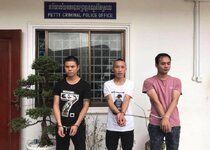
On August 23, 2018, at 23:30pm, police received a telephone complaint that a Chinese man was being held hostage by other Chinese nationals. After receiving the telephone complaint, the Criminal Police Department conducted a careful investigation until August 24, 2018 at 3:30 pm, when they moved in to rescue the man from Room 205 Of Wei Ching Hotel Group 7, Village 2, Sangkat 2, Sihanoukville.

The victim was identified as YANG JIE, a 32-year-old Chinese man, and three suspects are: 1. WANG LE PIN, 31 year old, 2. LU MING JIAN, 32 years old, and 3- XIAO SONG Male, 28 years old. The three suspects are all Chinese nationals, working for the casino in Group 7, Village 2, Sangkat 2, Sihanoukville.
According to the authorities, this case happened because the victim had borrowed a $ 4,000 cash bond to gamble in their casino. But when the money was spent and lost by the victim, the suspects grabbed him and locked him up, so they could get the victim to contact his relatives or friends to ask them for ransom money for his release.
The three suspects are still pursuing the procedure at the Sihanoukville Police Station.


Wir wissen nun auch endlich das Alter der beiden nicht schlecht aussehenden juengeren Damen, alles ganz legal:
25 August 2018

Sihanoukville, Cambodia news: Brigadier General Choun Narin, provincial police chief of Preah Sihanouk province, said that on 24 August 2018, four Chinese nationals, two women and two men, were detained by police for the dissemination of pornographic photos: Xiang Zi, 19, female, Chao jian ring, female, 18, Liu xiong fei, 27, male and Duan yu cheng, 36, male.

The group were arrested in a car in Village 1, Sangkat 2, Sihanoukville with 684 sexually explicit photo pamphlets.
They were taken to the Sihanoukville police station for questioning, but have refused to cooperate with authorities. As a result, police have seized the pamphlets and the car, plate no. Phnom Penh 2O-8959, and are preparing to send the four flyer distributors to court.
Zum Thema Hotelunterkuenfte ein weiterer Beitrag:
25 August 2018
Sihanoukville, Cambodia News: Police in Preah Sihanouk province have arrested three Chinese nationals for allegedly confining a Chinese citizen in order to force his relatives to pay up to $4,000 in ransom, according to Sihanoukville police reports.

On August 23, 2018, at 23:30pm, police received a telephone complaint that a Chinese man was being held hostage by other Chinese nationals. After receiving the telephone complaint, the Criminal Police Department conducted a careful investigation until August 24, 2018 at 3:30 pm, when they moved in to rescue the man from Room 205 Of Wei Ching Hotel Group 7, Village 2, Sangkat 2, Sihanoukville.

The victim was identified as YANG JIE, a 32-year-old Chinese man, and three suspects are: 1. WANG LE PIN, 31 year old, 2. LU MING JIAN, 32 years old, and 3- XIAO SONG Male, 28 years old. The three suspects are all Chinese nationals, working for the casino in Group 7, Village 2, Sangkat 2, Sihanoukville.
According to the authorities, this case happened because the victim had borrowed a $ 4,000 cash bond to gamble in their casino. But when the money was spent and lost by the victim, the suspects grabbed him and locked him up, so they could get the victim to contact his relatives or friends to ask them for ransom money for his release.
The three suspects are still pursuing the procedure at the Sihanoukville Police Station.


Zuletzt bearbeitet:
Hier etwas zum Thema Gruppendynamik:

Sihanoukville,Cambodia News: Two men have been arrested, out of 17 Chinese nationals sought by police, for acts of violence on a Chinese man late at night on August 25, 2018 at Point 23, Village 5, Sangkat 4, Sihanoukville.
The victim has been identified as DO LI, male, 21 years old, Chinese passport, occupation: Online personnel at LIXIN Casino 3rd floor, residing at the LIXIN casino's staff building in Group 23, Village 5, Sangkat 4, Sihanoukville. He was taken to Sihanoukville Referral Hospital for treatment.

Sihanoukville police, under the direct orders of Police Chief Chuon Narin, have detained LI HONG CHANG, 23, AND LIU YI CHANG male, 26, for intentional violence. Both suspects are Chinese online casino personnel, working at LIXIN Casino. However, police are still searching for the other 15 Chinese nationals involved in the violence against DO LI, accused of stealing from the casino.
The two suspects are waiting to appear in court.

In PP ging waehrendessen eine ander Geschichte in Runde 2:
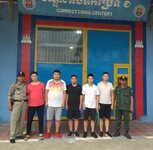
Phnom Penh, Cambodia News: On 25 August 2018, five Chinese nationals (male), appeared before Phnom Penh Court of First Instance on charges of abduction, torture, rape, extortion and theft.
The crimes were committed against other Chinese nationals in three different locations in Phnom Penh on 12,13, and 16 August 2018. A complaint was filed by the victims on 16 August, and the suspects were taken into custody.



In the meantime, the judge decided today to send the five men to Prey Sar prison.

Sihanoukville,Cambodia News: Two men have been arrested, out of 17 Chinese nationals sought by police, for acts of violence on a Chinese man late at night on August 25, 2018 at Point 23, Village 5, Sangkat 4, Sihanoukville.
The victim has been identified as DO LI, male, 21 years old, Chinese passport, occupation: Online personnel at LIXIN Casino 3rd floor, residing at the LIXIN casino's staff building in Group 23, Village 5, Sangkat 4, Sihanoukville. He was taken to Sihanoukville Referral Hospital for treatment.

Sihanoukville police, under the direct orders of Police Chief Chuon Narin, have detained LI HONG CHANG, 23, AND LIU YI CHANG male, 26, for intentional violence. Both suspects are Chinese online casino personnel, working at LIXIN Casino. However, police are still searching for the other 15 Chinese nationals involved in the violence against DO LI, accused of stealing from the casino.
The two suspects are waiting to appear in court.

In PP ging waehrendessen eine ander Geschichte in Runde 2:

Phnom Penh, Cambodia News: On 25 August 2018, five Chinese nationals (male), appeared before Phnom Penh Court of First Instance on charges of abduction, torture, rape, extortion and theft.
The crimes were committed against other Chinese nationals in three different locations in Phnom Penh on 12,13, and 16 August 2018. A complaint was filed by the victims on 16 August, and the suspects were taken into custody.



In the meantime, the judge decided today to send the five men to Prey Sar prison.
Dann kam der Sonntag:
Boetchefahren war einmal -
Sihanoukville, Cambodia News: At 4 am on August 26, 2018, a fire broke out aboard a tourist boat belonging to a German expat, ROBERT HANDOK, 50 years old, at Rolok barrier, Sangkat 4, Sihanoukville. The company is known as SunTours Sihanoukville.
After the incident, the boat was severely damaged, but no one was injured.




Drogenkonsum wird auch etwas komplizierter. Erst der Verlust der Beachbars, dann weniger tuktuk Fahrer auf Tola, und nun das.....

Sihanoukville, Cambodia News: According to Lieutenant Chuon Narin, the chief of Sihanoukville police, on August 26 2018 at 00:15 am, Mr. Yun Min, director of the anti-drug department, and Mr. Keang Sonthrot, the prosecutor of the provincial court, led the forces of order on a drug raid of the New Oriental KTV in Sihanoukville.
62 people were detained in the raid, including 15 Chinese nationals, but the others were Cambodians, including the owner, a manager and a drug trafficker. The police confiscated a container of the drug ketamine, a small and a large box of white powder, and some drug using equipment. A number of unused condoms were also discovered on the premises.







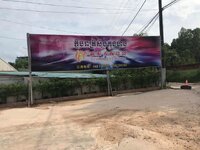
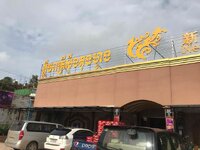




Es wird aber auch gearbeitet in SHV:
Cambodian Immigration Police Arrests 18 Chinese for Illegal Settlement
26/08/18 15:45
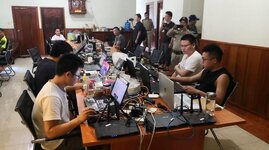
Sihanoukville (FN), August 26 - General Department of Immigration, on Friday, arrested 18 Chinese at Sangkat 4, Sihanoukville province, for illegally settling in Sihanoukville, Cambodia.


The arrest was made on Friday [24 August 2018] under the coordination of Deputy Prosecutor of Sihanoukville Provincial Court.


Boetchefahren war einmal -
Sihanoukville, Cambodia News: At 4 am on August 26, 2018, a fire broke out aboard a tourist boat belonging to a German expat, ROBERT HANDOK, 50 years old, at Rolok barrier, Sangkat 4, Sihanoukville. The company is known as SunTours Sihanoukville.
After the incident, the boat was severely damaged, but no one was injured.




Drogenkonsum wird auch etwas komplizierter. Erst der Verlust der Beachbars, dann weniger tuktuk Fahrer auf Tola, und nun das.....

Sihanoukville, Cambodia News: According to Lieutenant Chuon Narin, the chief of Sihanoukville police, on August 26 2018 at 00:15 am, Mr. Yun Min, director of the anti-drug department, and Mr. Keang Sonthrot, the prosecutor of the provincial court, led the forces of order on a drug raid of the New Oriental KTV in Sihanoukville.
62 people were detained in the raid, including 15 Chinese nationals, but the others were Cambodians, including the owner, a manager and a drug trafficker. The police confiscated a container of the drug ketamine, a small and a large box of white powder, and some drug using equipment. A number of unused condoms were also discovered on the premises.













Es wird aber auch gearbeitet in SHV:
Cambodian Immigration Police Arrests 18 Chinese for Illegal Settlement
26/08/18 15:45

Sihanoukville (FN), August 26 - General Department of Immigration, on Friday, arrested 18 Chinese at Sangkat 4, Sihanoukville province, for illegally settling in Sihanoukville, Cambodia.


The arrest was made on Friday [24 August 2018] under the coordination of Deputy Prosecutor of Sihanoukville Provincial Court.


Danke an dieser Stelle für die ganzen Infos über "Snooky", ich war ein paar mal dort, das letzte mal in 2015. Schön war es damals noch, auch wenn schon damals nach und nach diverse Bausünden begangen wurden. An meinem letzten Aufenthalt hatte ich im Orchidee Guesthouse an der Rezeption eine wirklich süße Maus kennengelernt, leider musste ich sie nach drei Wochen Snooky-Aufenthalt zwecks Weiterreise nach Koh Chang zurücklassen.
Wenn ich mir die Bilder der Gegenwart ansehe, denke ich nur: "RIP Snooky". Ich glaube nicht, dass ich nochmal dorthin fahre. War trotzdem früher ne geile Zeit und wenn man sich vor Augen hält, wie preiswert und easy man dort für lange Zeit ein solides Gesamtpackage bekommen hat, war es das wert. Auch die Erinnerungen an die super Parties im Dolphin Shack bleiben.
Hab einige echt wunderbare Erinnerungen auch an Koh Rong und & Sanloem. Die Inseln mit dem passenden (nicht fußkrankem!) Girl an der Seite einfach Spitze. Habt ihr Infos aus erster oder zweiter Hand, wie es dort zur Zeit aussieht? Ist die Barszene auf Koh Rong noch in Barang Hand oder auch schon chinesisch dominiert?
Wenn ich mir die Bilder der Gegenwart ansehe, denke ich nur: "RIP Snooky". Ich glaube nicht, dass ich nochmal dorthin fahre. War trotzdem früher ne geile Zeit und wenn man sich vor Augen hält, wie preiswert und easy man dort für lange Zeit ein solides Gesamtpackage bekommen hat, war es das wert. Auch die Erinnerungen an die super Parties im Dolphin Shack bleiben.
Hab einige echt wunderbare Erinnerungen auch an Koh Rong und & Sanloem. Die Inseln mit dem passenden (nicht fußkrankem!) Girl an der Seite einfach Spitze. Habt ihr Infos aus erster oder zweiter Hand, wie es dort zur Zeit aussieht? Ist die Barszene auf Koh Rong noch in Barang Hand oder auch schon chinesisch dominiert?
Es werden dort nun eher 'Luxus' Resorts gebaut. Letzten Dezember konnte ich auch reichlich verschiffte (ch kann man auch weglassen) Chinesen am Pier sehen. Die fahren allerdings vermutlich nur fuer Tagesbesuche rueber.
Was es an Backpackern noch gab ging damals sofort vom Bus auf die Inseln. Preise haben wohl auch kraeftig angezogen. Wie gesagt, nichts wirklich aktuelles. 1 Monat in Kambodscha war frueher einmal 2-3 Jahre. Auf den Backpacker Foren wird's mehr infos geben.
Die obigen Berichte sind nur die Spitze des beruechtigten Eisbergs. Die Erzaehlungen von Expats, vielleicht vieles uebertrieben, sind krass. Einiges auch zu Chiang Rai/Mai. Ich kann die Kommentare zu PP einigesmassen beurteilen. Das meiste trifft zu und es geht noch mehr. Kambodschaner sind sehr zurueckhaltend und teilen ihren Frust nicht. Waere in dem Fall ja auch Kritik an der Einheitspartei und dem Diktator.
Was es an Backpackern noch gab ging damals sofort vom Bus auf die Inseln. Preise haben wohl auch kraeftig angezogen. Wie gesagt, nichts wirklich aktuelles. 1 Monat in Kambodscha war frueher einmal 2-3 Jahre. Auf den Backpacker Foren wird's mehr infos geben.
Die obigen Berichte sind nur die Spitze des beruechtigten Eisbergs. Die Erzaehlungen von Expats, vielleicht vieles uebertrieben, sind krass. Einiges auch zu Chiang Rai/Mai. Ich kann die Kommentare zu PP einigesmassen beurteilen. Das meiste trifft zu und es geht noch mehr. Kambodschaner sind sehr zurueckhaltend und teilen ihren Frust nicht. Waere in dem Fall ja auch Kritik an der Einheitspartei und dem Diktator.
Ähnliche Themen
-
-
Thailand Udon remains - Was war , was ist , was wird (?)
- Gestartet von Luemmelmann
- Antworten: 6
-
-
Western Union & Klarna Nutzung in Thailand
- Gestartet von Uncle Bam
- Antworten: 34
-




















